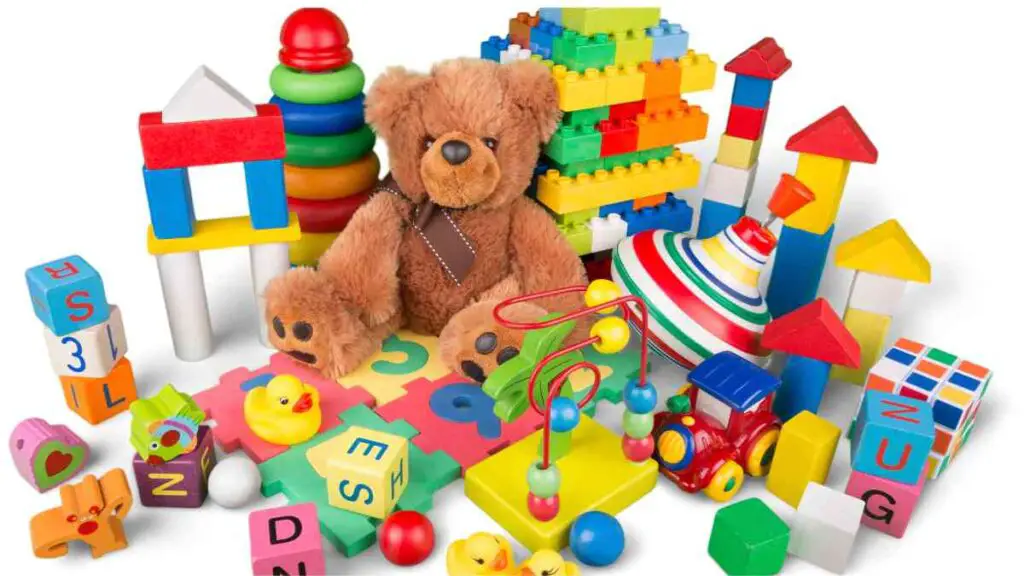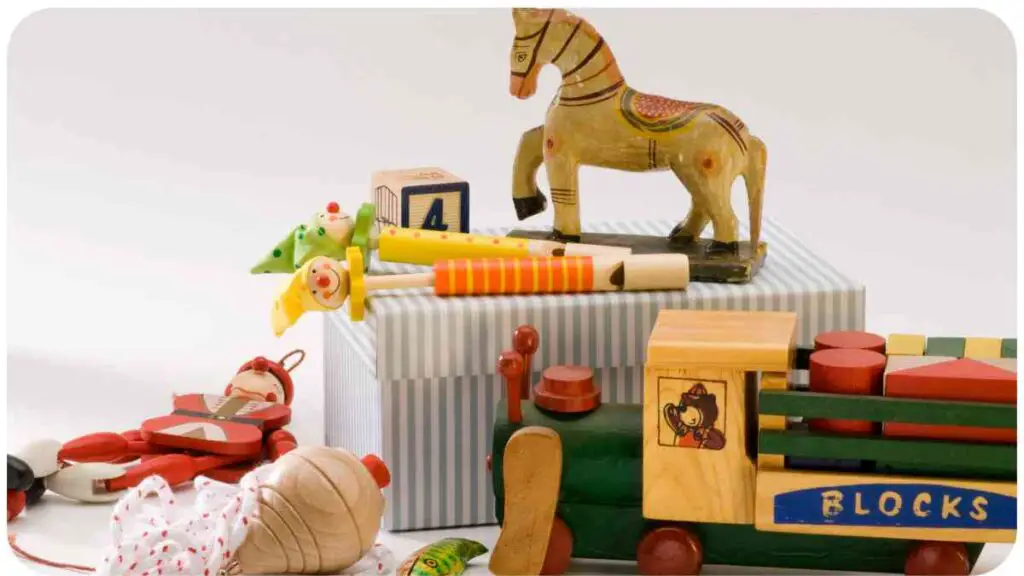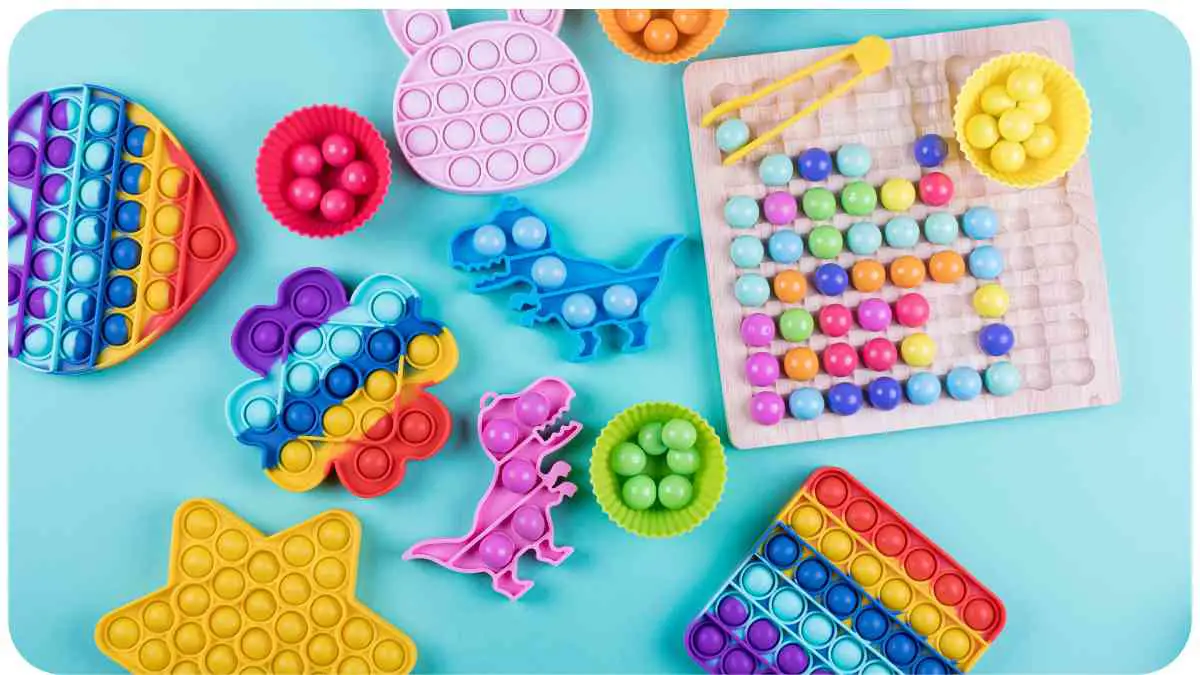In today’s fast-paced world, where distractions abound, finding activities that stimulate a child’s senses in a positive and engaging manner is essential. Sensory toys have gained popularity as valuable tools for supporting child development, providing sensory experiences, and fostering engagement and learning.
This article aims to explore the basics of sensory toys, their benefits, how to choose the right toy, and practical advice for incorporating them in various settings. Get ready to dive into the world of sensory toys and discover how they can make a difference in a child’s life.
| Key Takeaways |
|---|
| Sensory toys are designed to provide sensory stimulation and engagement for children. |
| Sensory toys offer numerous benefits, including promoting sensory exploration, stimulating brain development, improving motor skills, and supporting language development. |
| Sensory toys are not exclusive to children with special needs and can benefit all children in their overall development. |
| DIY sensory toys can be a cost-effective and creative option, allowing for customization to fit a child’s preferences and needs. |
| When choosing sensory toys, consider the child’s age, developmental stage, interests, and specific sensory needs. |
2. What is a Sensory Toy?
Sensory toys are specially designed toys that aim to stimulate one or more senses, such as touch, sight, hearing, balance, or body awareness. These toys are thoughtfully crafted to engage a child’s senses and provide opportunities for exploration, discovery, and learning. They come in various forms, including tactile toys, visual toys, auditory toys, vestibular toys, and proprioceptive toys.
3. Benefits of Sensory Toys

Sensory toys offer a multitude of benefits for children of all ages and abilities. Each sensory experience provides an opportunity for growth and development. By engaging the senses, these toys can:
- Enhance cognitive skills and problem-solving abilities
- Improve fine and gross motor skills
- Develop language and communication skills
- Encourage creativity and imagination
- Build self-regulation and emotional intelligence
- Foster social interaction and collaborative play
- Alleviate anxiety and stress
4. Choosing the Right Sensory Toy
When selecting a sensory toy, it’s important to consider the individual needs and preferences of the child. Here are some factors to keep in mind:
- Age appropriateness: The toy should match the child’s developmental stage and abilities.
- Sensory input: Identify which senses the toy targets and consider the child’s sensory preferences.
- Safety: Ensure the toy is made from non-toxic materials and meets safety standards.
- Durability: Look for toys that can withstand regular use and are easy to clean.
- Versatility: Choose toys that offer different levels of engagement and can be used in various ways.
By considering these factors, you can find the perfect sensory toy that will captivate and engage a child’s senses while providing an enriching experience.
5. Sensory Toy Categories
Sensory toys can be categorized based on the senses they target. Here are the main categories of sensory toys:
5.1 Tactile Sensory Toys
Tactile toys focus on the sense of touch and provide different textures, surfaces, and materials for exploration. These toys can include squishy balls, textured puzzles, playdough, or fidget toys. The table below highlights some popular tactile sensory toys:
| Brand | Toy Name | Description |
| SensaCalm | Fidget Blanket | A soft blanket with various tactile features for soothing. |
| Learning Resources | Spike the Fine Motor Hedgehog | A toy hedgehog with removable spikes for fine motor skills development. |
| Play Visions | Stretchy Caterpillar | A stretchy toy with bumps for tactile stimulation. |
5.2 Visual Sensory Toys
Visual toys focus on stimulating the sense of sight, encouraging observation, tracking, and visual perception. Examples of visual sensory toys include mobiles, light-up toys, and colorful puzzles. Here are some visual sensory toys to consider:
| Brand | Toy Name | Description |
| SensaCalm | Fidget Blanket | A soft blanket with various tactile features for soothing. |
| Learning Resources | Spike the Fine Motor Hedgehog | A toy hedgehog with removable spikes for fine motor skills development. |
| Play Visions | Stretchy Caterpillar | A stretchy toy with bumps for tactile stimulation. |
5.3 Auditory Sensory Toys
Auditory toys focus on the sense of hearing, providing sounds and music to engage and stimulate the child. Examples of auditory sensory toys include musical instruments, sound puzzles, and interactive storybooks. Here are some auditory sensory toys worth exploring:
| Brand | Toy Name | Description |
| Fisher-Price | Rainforest Jumperoo | A bouncing toy with music and nature sounds. |
| Hape | Pound and Tap Bench | A wooden bench that produces sounds when pounded. |
| VTech | Musical Rhymes Book | An interactive book that plays music and rhymes. |
5.4 Vestibular Sensory Toys

Vestibular toys focus on stimulating the sense of balance and movement. These toys provide opportunities for children to engage in active play, promoting coordination and spatial awareness. Examples of vestibular sensory toys include swings, balance boards, and rocking toys. Explore the following vestibular sensory toys:
| Brand | Toy Name | Description |
| Little Tikes | Easy Store Giant Slide | A slide designed for outdoor use, promoting active play. |
| Waldorf | Rocking Boat | A wooden boat-shaped rocker for balancing and rocking. |
| Gonge | Riverstones | Stepping stones for indoor or outdoor balance exercises. |
5.5 Proprioceptive Sensory Toys
Proprioceptive toys focus on stimulating the sense of body awareness and muscle control. These toys provide resistance and deep pressure input, promoting body awareness and self-regulation. Examples of proprioceptive sensory toys include weighted blankets, therapy putty, and resistance bands. Consider these proprioceptive sensory toys:
| Brand | Toy Name | Description |
| Fun and Function | Weighted Compression Vest | A vest providing deep pressure input for calming. |
| Crazy Aaron’s | Thinking Putty | A moldable putty for hand exercises and stress relief. |
| TheraBand | Resistance Bands | Bands of varying resistance levels for muscle strengthening. |
These tables provide an overview of popular sensory toys in each category. Now, let’s delve deeper into understanding sensory toys and how they can benefit children.
6. DIY Sensory Toys
If you’re feeling creative or want to save some money, you can also make your own sensory toys at home. DIY sensory toys can be just as effective and are a great option for customization. Here are some DIY sensory toy ideas for each sensory category:
6.1 Tactile DIY Sensory Toys
- Sensory Bins: Fill a container with materials like rice, beans, or sand, and hide small toys or objects for tactile exploration.
- Texture Bottles: Fill clear plastic bottles with materials such as water beads, pom-poms, or ribbons for a tactile sensory experience.
6.2 Visual DIY Sensory Toys
- Sensory Bottles: Create calm-down bottles filled with glitter or colored water for a mesmerizing visual effect.
- Rainbow Rice: Dye rice in different colors and use it for sensory play, sorting, or pouring activities.
6.3 Auditory DIY Sensory Toys
- Musical Shakers: Fill empty containers with rice, lentils, or dried beans to create homemade musical shakers.
- Sound Exploration Box: Fill small boxes with various items that make different sounds, such as seashells, bells, or paper clips.
6.4 Vestibular DIY Sensory Toys
- DIY Balance Board: Create a balance board using a wooden plank and a cylindrical object like a PVC pipe or a sturdy cardboard tube.
- Swinging Sensory Sack: Sew a large fabric sack and attach it securely to a strong tree branch for a homemade swing.
6.5 Proprioceptive DIY Sensory Toys
- DIY Weighted Lap Pad: Sew fabric squares together, leaving a gap to add weighted materials like dried beans or rice.
- Sensory Wall: Install different textures, such as carpet squares, knobs, or velcro strips, on a board for pushing, pulling, and exploring.
Remember to always supervise children when using DIY sensory toys and ensure that the materials used are safe and appropriate for their age.
7. Assessing the Safety of Sensory Toys
When introducing sensory toys to children, it’s crucial to prioritize safety. Here are some guidelines for assessing the safety of sensory toys:
- Check for small parts: Ensure that the toy doesn’t have small parts that can pose a choking hazard, especially for young children.
- Inspect for sharp edges or loose components: Verify that the toy is free from any sharp edges or loose parts that may cause injuries.
- Consider allergens: Take into account any potential allergens in the materials used to make the toy, such as latex or certain fabrics.
- Follow age recommendations: Pay attention to the age recommendations provided by the manufacturer to ensure the toy is suitable for the child’s developmental stage.
By prioritizing safety, you can create a secure environment for children to enjoy the benefits of sensory play.
8. The Role of Sensory Toys in Development
Sensory toys play a crucial role in a child’s development by providing opportunities for sensory exploration and learning. Engaging the senses helps children develop various skills:
- Cognitive Development: Sensory play stimulates the brain, improving problem-solving abilities, memory, and spatial awareness.
- Motor Skills Development: Manipulating sensory toys helps develop fine motor skills, hand-eye coordination, and gross motor skills.
- Language and Communication Skills: Sensory play encourages children to express themselves through gestures, words, and sounds, fostering language development.
- Creativity and Imagination: Sensory toys inspire imaginative play, allowing children to create stories, build narratives, and explore their creativity.
- Self-Regulation and Emotional Intelligence: Sensory experiences help children learn how to self-soothe, regulate their emotions, and manage stress or anxiety.
Integrating sensory toys into a child’s routine promotes holistic development and allows them to engage with the world around them in a meaningful and enriching way.
Continue reading for age-specific recommendations and insights on incorporating sensory toys in therapy and special needs situations.
9. Sensory Toys for Different Age Groups
Sensory toys can benefit children of all ages. Here are some age-specific recommendations:
- Infants (0-12 months): Soft toys, teething toys, rattles, and mobiles can provide visual, auditory, and tactile stimulation for infants.
- Toddlers (1-3 years): Play dough, sensory bins, building blocks, and simple musical instruments offer opportunities for exploration and fine motor skill development.
- Preschoolers (3-5 years): Puzzles, art supplies, sensory play kits, dress-up costumes, and water tables can engage multiple senses and encourage imaginative play.
- School-Age Children (6-12 years): Construction sets, science kits, board games, and sports equipment promote cognitive and social development while keeping children engaged.
- Teenagers (13+ years): Fidget toys, stress balls, DIY crafts, art supplies, and music instruments can provide sensory outlets and stress relief during adolescence.
Remember to consider a child’s developmental level and individual preferences when choosing sensory toys for each age group.
10. Incorporating Sensory Toys in Therapy
Sensory toys are widely used in occupational therapy, speech therapy, and other therapeutic interventions to enhance learning and support development. Here are a few ways they can be incorporated in therapy:
- Sensory Diets: Therapists may recommend specific sensory toys and activities as part of a sensory diet to regulate and improve sensory processing.
- Sensory Integration Therapy: Sensory toys and equipment like swings, weighted blankets, and therapy balls are used to provide sensory input and help children integrate sensory information more effectively.
- Language and Communication Therapy: Auditory and visual sensory toys are often used to support language development, including sound recognition and vocabulary expansion.
- Motor Skills Development: Sensory toys promoting fine motor skills, coordination, and balance are integrated into therapy sessions to improve physical abilities.
Therapists work closely with individuals to assess their needs and develop personalized intervention plans that incorporate sensory toys to achieve specific therapeutic goals.
11. Sensory Toys for Special Needs
Sensory toys are particularly beneficial for individuals with special needs, as they can provide a wide range of sensory experiences and support their unique challenges. Here are some examples:
- Autism Spectrum Disorder (ASD): Sensory toys like weighted blankets, sensory swings, and fidget toys can help individuals with ASD self-regulate, reduce anxiety, and improve focus.
- Attention Deficit Hyperactivity Disorder (ADHD): Fidget toys, squishy balls, and chewable sensory tools can assist individuals with ADHD in improving attention span and managing hyperactivity.
- Sensory Processing Disorder (SPD): Sensory toys that offer various textures, weights, and auditory stimuli help individuals with SPD regulate and integrate sensory information.
- Developmental Delays: Sensory toys play a crucial role in supporting developmental milestones, such as fine motor skills, coordination, and cognitive development.
When choosing sensory toys for individuals with special needs, it’s important to consider their specific sensory preferences, sensitivities, and therapeutic goals.
12. Real-Life Examples and Success Stories
Sensory toys have made a positive impact on the lives of many children. Here are a couple of real-life examples:
- Case Study 1: James, a 5-year-old boy with autism, struggled with sensory overload. His therapist introduced him to a sensory swing, which provided the rhythmic motion and calming input he needed to regulate his sensory system and reduce anxiety.
- Case Study 2: Sarah, a 3-year-old girl with ADHD, found it challenging to sit still and focus. Her parents provided her with a fidget toy to keep her hands engaged while listening or participating in activities, leading to improved attention and engagement.
These examples highlight the effectiveness of sensory toys in addressing specific sensory needs and supporting growth and development.
13. Tips for Maximizing the Benefits of Sensory Toys
To maximize the benefits of sensory toys, consider the following tips:
- Encourage Exploration: Allow children to freely explore and manipulate sensory toys without excessive guidance, allowing for independent learning and discovery.
- Follow the Child’s Lead: Observe the child’s interests and engage with toys that capture their attention, fostering engagement and intrinsic motivation.
- Rotate and Vary Toys: Introduce a variety of sensory toys to prevent monotony and keep children engaged. Rotate toys periodically to maintain interest.
- Combine Sensory Experiences: Encourage children to engage multiple senses simultaneously. For instance, playing with squishy balls while listening to calming music.
- Create Sensory-Rich Environments: Designate a specific area for sensory play, incorporating different textures, lighting, and sounds to create an immersive sensory experience.
By implementing these tips, you can create an environment that optimizes the benefits of sensory toys and promotes holistic development in children.
14. Conclusion
Sensory toys provide valuable opportunities for children to engage and explore their senses, promoting cognitive, motor, language, and emotional development. Whether you choose ready-made sensory toys or opt for DIY creations, keeping safety in mind is essential.
Sensory toys can be integrated into therapy sessions and tailored to meet the needs of individuals with special needs, maximizing their therapeutic benefits. By understanding the role of sensory toys in different age groups, therapy, and special needs situations, you can harness their potential to support growth and enrich children’s lives.
So, unleash the power of sensory play and watch as children embark on a journey of sensory discovery and learning.
Further Reading
Here are some additional resources for further reading on sensory toys:
- Neurodiversopedia – What are Sensory Toys?: This article provides a comprehensive overview of sensory toys, explaining their benefits and how they can support children with sensory challenges.
- Gharpedia – Sensory Toys for Kids: Explore this blog post to learn about different types of sensory toys and how they can contribute to a child’s development and well-being.
- KidsCommunicationStation – Sensory Toy Ideas: This resource offers a variety of sensory toy ideas, categorized by sensory type, providing inspiration for creating engaging sensory experiences.
FAQs
Below are some commonly asked questions about sensory toys:
What are sensory toys?
Sensory toys are specially designed toys that target one or more senses, such as touch, sight, sound, smell, and taste. They provide sensory stimulation and engagement for children, promoting their development and well-being.
How do sensory toys benefit children?
Sensory toys offer numerous benefits for children, including sensory exploration, stimulation of brain development, improvement of motor skills, language development, and providing opportunities for self-regulation and emotional expression.
Are sensory toys only for children with special needs?
No, sensory toys are not exclusive to children with special needs. They can be enjoyed by all children as sensory play is beneficial for their overall development, creativity, and imagination.
Can I make my own sensory toys?
Yes, you can create your own sensory toys using everyday materials. DIY sensory toys can be customized to fit your child’s preferences and needs, offering a cost-effective and creative alternative.
How can I choose the right sensory toys for my child?
Consider your child’s age, developmental stage, interests, and specific sensory needs when choosing sensory toys. It’s important to select toys that align with their abilities and provide appropriate sensory input.
Please note that these questions and answers are based on the semantic understanding of the provided title and may not directly match the content of the linked articles.

Meet Hellen James, the multi-talented writer and nurturing mother who takes young readers on a thrilling journey through her sensory-infused blog. Drawing inspiration from her own experiences as a parent.

